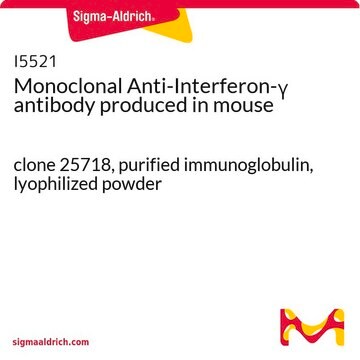SCC226
YUMM1.4 Mouse Melanoma Cell Line

Synonim(y):
YUMM1.4 Mouse Melanoma Cell Line, Yale University Mouse Melanoma 1.4 cell line, Yale University Mouse Melanoma cell line
About This Item
Polecane produkty
pochodzenie biologiczne
mouse
Poziom jakości
opakowanie
vial of ≥1 x 10^6 vial (viable cells per vial)
producent / nazwa handlowa
Millipore
metody
cell culture | mammalian: suitable
Warunki transportu
liquid nitrogen
temp. przechowywania
−196°C
Zastosowanie
- Each vial contains > 1X106 viable cells.
- YUMM1.4 cells are tested negative for infectious diseases by a Mouse Essential CLEAR panel by Charles River Animal Diagnostic Services.
- Cells are verified to be of mouse origin and negative for inter-species contamination from rat, chinese hamster, Golden Syrian hamster, human and non-human primate (NHP) as assessed by a Contamination CLEAR panel by Charles River Animal Diagnostic Services.
- Cells are negative for mycoplasma contamination.
Cechy i korzyści
Opis wartości docelowych
The YUMM1.4 cell line was produced to be more experimentally relevant. The cell line was derived by backcrossing important alleles into C57BL/6J mice. The mice were interbred to produce human-relevant genetically defined mouse models that could then be used to generate cell lines. Melanomas were induced by applying 4-hydroxytamoxifen to induce Cre-lox allele recombination. Cells were then mechanically and enzymatically dissociated from the removed tumor. The melanoma lines generated from this procedure retained important human melanoma characteristics useful for studying disease progression.
The YUMM1.4 cell line is driven by Braf activation, Pten inactivation, and Cdkn2a inactivation.1 The cell line is positive for the common melanoma marker, MelanA. The cells are syngeneic with C57BL/6J mice and are very tumorigenic in vivo.
Source
Cell line was derived from a 4-hydroxytamoxifen-induced melanoma tumor in a male C57BL/6 mouse into which mutations from the Braf/Pten genetically-engineered mouse model had been introduced via backcrossing.
References
1. Meeth, K., Wang, J. X., Micevic, G., Damsky, W., & Bosenberg, M. W. (2016). The YUMM lines: a series of congenic mouse melanoma cell lines with defined genetic alterations.Pigment cell & melanoma research,29(5), 590-597.
Przechowywanie i stabilność
Inne uwagi
Oświadczenie o zrzeczeniu się odpowiedzialności
Kod klasy składowania
10 - Combustible liquids
Klasa zagrożenia wodnego (WGK)
WGK 2
Temperatura zapłonu (°F)
Not applicable
Temperatura zapłonu (°C)
Not applicable
Certyfikaty analizy (CoA)
Poszukaj Certyfikaty analizy (CoA), wpisując numer partii/serii produktów. Numery serii i partii można znaleźć na etykiecie produktu po słowach „seria” lub „partia”.
Masz już ten produkt?
Dokumenty związane z niedawno zakupionymi produktami zostały zamieszczone w Bibliotece dokumentów.
Nasz zespół naukowców ma doświadczenie we wszystkich obszarach badań, w tym w naukach przyrodniczych, materiałoznawstwie, syntezie chemicznej, chromatografii, analityce i wielu innych dziedzinach.
Skontaktuj się z zespołem ds. pomocy technicznej